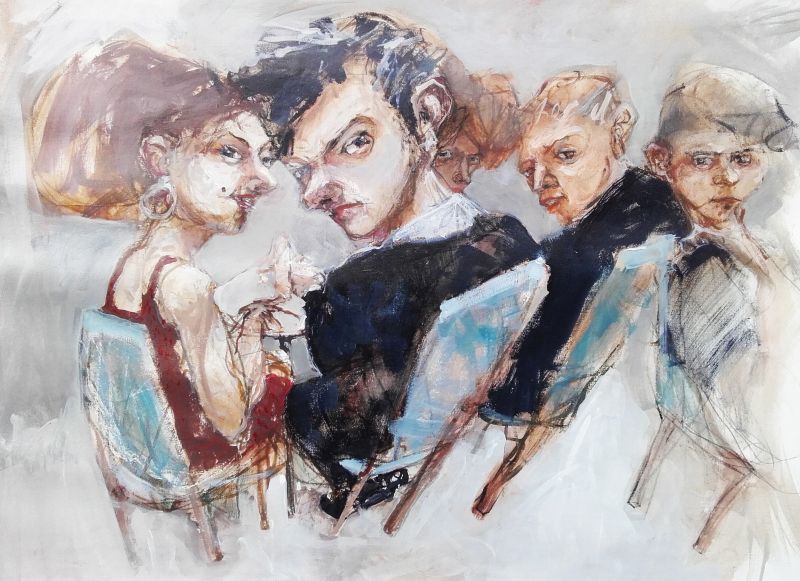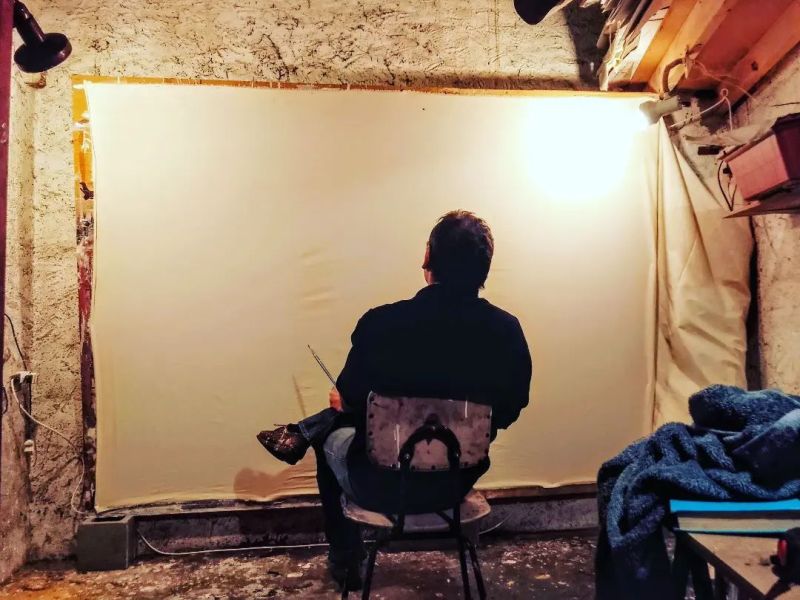Me ha resultado especialmente interesante la obra de Claudio Chanquet, el artista entrevistado por Shirley Rebuffo que presentamos hoy en estos dos artículos (el primero con texto en español, este segundo en inglés). He buceado con sumo deleite en su obra pictórica de los últimos años, cuyas claves radican en una mirada cruda a los personajes, que nos presenta despojados de todo artificio (en general sin mobiliario, sin referencias espaciales, sin paisaje), interactuando teatralmente, dispuestos y observados desde ángulos infrecuentes (planos cenitales, desde abajo, en escorzo), con una cuidada economía colorista y permeados por una amplia paleta expresiva en la que el artista vuelca su mundo interior y su mirada sobre la compleja sociedad en la que vivimos, estableciéndose de esta forma un diálogo emocional entre el pintor y el observador a través de las intensas interacciones y marcada gestualidad de las figuras representadas.
He seleccionado una muestra de sus dibujos y pinturas creados a lo largo de más de una década para acompañar las reflexiones de Claudio y algunos textos de crítica y análisis que nos ayudan a contextualizar el desarrollo artístico de este notable creador uruguayo.
I have found particularly interesting the work of Claudio Chanquet, the artist interviewed by Shirley Rebuffo which we present today in these two articles (the first one with text in Spanish, the second one in English). I have dived with great delight into his pictorial work of recent years, whose keys lie in a raw look at the characters, which he presents to us stripped of all artifice (generally without furniture, without spatial references, without landscape), interacting theatrically, arranged and observed from unusual angles (zenithal shots, from below, foreshortened), with a careful economy of color and permeated by a wide expressive palette in which the artist overturns his inner world and his look on the complex society in which we live, thus establishing an emotional dialogue between the painter and the observer through the intense interactions and marked gestures of the figures represented.
I have selected a set of his drawings and paintings created over more than a decade to accompany Claudio's reflections and some critical and analytical texts that help us to contextualize the artistic development of this remarkable Uruguayan creator.
______________________________________________________________________________
Claudio Chanquet Rodrigo
(Montevideo, Uruguay, 1963-)
Claudio Chanquet,Casa de la Cultura, 2022. Foto / Photo: La Semana
Claudio Chanquet Rodrigo is a Uruguayan draftsman and painter, born in Montevideo in 1963.
An architect since 1991, he has been teaching design and architectural project at the Faculty of Architecture of the University of the Republic (Montevideo, Uruguay) between 1993 and 2013.
He has participated in various architecture, graphic design, drawing and painting competitions in more than 30 years of activity, obtaining mentions and awards in various biennials, exhibitions and competitions.
He has regularly exhibited individually and collectively since 1999. You can consult his exhibition curriculum in detail at the end of this post.
"Tensiones Varias / Various Tensions", técnica mixta sobre lienzo / mixed media on canvas, 120 x 150 cm., 2016
The feedback that exists between architecture and the visual arts forges a creative bond that has shaped unforgettable cities, landscapes and visual experiences. This deep and enriching bond between two avenues of artistic expression manifests itself in a variety of ways, from the direct influence of artistic movements on architecture to the incorporation of plastic elements in architectural designs.
This relationship is also manifested in the looseness of the hand, the choice of colors, textures and shapes that, within an architectural space, evokes the palette of a painter who gives form in two-dimensionality since he also has, as an architect, the training for each element to contribute to the creation of a three-dimensional work.
The dialogue between architecture and the visual arts often creates an imaginative tension where shapes, lines and colors coexist in a visual dance establishing a fertile ground for creative innovation. This tension can be harmonious and provocative, challenging established conventions and opening up new aesthetic possibilities as is the case with the work of Claudio Chanquet, an artist who is concerned with the influence of the viewer in artistic dialogue. Shirley Rebuffo
"Mujer en éxtasis / Woman In Ecstasy", acrílico y pastel / acrylic and pastel, 100 x 115 cm., 2020
Interview by Shirley Rebuffo
Shirley Rebuffo: How many years have you been involved in art?
Claudio Chanquet Rodrigo: I have always been interested in drawing and painting since I was a child. The practice and curiosity to learn and understand techniques, to read about the history of art and the life of painters has been a permanent activity in me. Also, parallel to my professional activity as an architect, I have dedicated myself to cultivate the specific practice of drawing and painting, as well as to study it. Showing my works has happened gradually, first small exhibitions, some collective, and for about twenty years I have been exhibiting in some galleries, I publish in networks and I organize more ambitious exhibitions. In addition to a more systematic practice and study, with objectives and contents thought out with some planning.
SR: Did your evolution in one field or another imply challenges, leaving comfort zones behind, or was it something that came naturally?
CCR: It implied and always implies many challenges. Drawing and painting permanently question what I do. Not only from the point of view of the content, but associated to this, the technique and the expressive form are questioned. "Making" implies a permanent state of affirmation and questioning. In addition to the fact that my academic training creates paradigms and "ways", drawing and painting, approached as expressive forms with their own "laws", contradict the knowledge acquired in the academy, breaking learned schemes. What we call "art" involves architecture, and of course many concepts are shared with all expressive manifestations, but they need to be reformulated because they are specific. In addition to the fact that other knowledge and a concrete practice must be acquired (the techniques of painting and drawing), it forces us to "think" in a different way.
"Pareja en un banco / Couple On A Bench"
Grafito y esmalte sobre cartón / graffite and enamel on cardboard, 50 x 70 cm., 2016
"¿Por qué murió el pájaro? / Why the bird died?"
Grafito y esmalte sobre cartón / graffite and enamel on cardboard, 50 x 70 cm., 2016
SR: How would you define your work?
CCR: I try to make what I do a reflection of reality. A reflection tinged by my vision, my sensibility and my position in front of the world. What I see of the reality of men and women in society. This reflection is metaphorical. I appeal therefore to the sensibility of an attentive observer willing to "read" what is presented, pretending to capture your generous attention. They are exaggerated images, often theatrical. They are staged, where the protagonists force postures and attitudes. Therefore, this reflected reality is not a mimesis (it would be a vain attempt), but an intentional recreation in function of the story. What I always maintain is that for it to be worthwhile it has to be convincing and meaningful.
SR: What challenges have you faced as an artist?
CCR: Ongoing challenges! To what comes from the above: to improve technically. To create new scenes and metaphors. Not to keep doing the same thing. To be relevant (which is not the same as being famous).
Témpera y acrílico sobre tela / tempera and acrylic on canvas, 2023
Exposición / Exposition "PANEO", Sala Carlos F. Sáez, MTOP, Montevideo, Uruguay
Foto / Photo: Lucia Durán
Boceto / Sketch (2020/21)
SR: You present us with characters with the same dramatis personae: they are particular ladies and gentlemen, we could even say the same human types with a similar personality. What ideas or experiences do you base the themes of your works on?
CCR: I try to show poetically what I observe of the world. Of course, every work speaks of the creator, of his ideas and sensibilities. But I do not make a self-referential work. What matters are the collective miseries, the yearnings of many, what unites and disunites so many of us, the overflowing passions... But what I show are characters acting in scenarios that are imitations of life itself. As I have said, images that are supposedly "poetic". Staging. Dramas and comedies where the corporal expressiveness, the exaggeration, the action of the bodies, their attitudes, the gestures are the expressive vehicle of human emotions and their conflicts. Of course, many of them go beyond the limits of the "plausible", they become symbols.
SR: Of all your works, could you choose one and tell me about it in depth?
CCR: It makes me uncomfortable to talk about my works. I believe that the work is made so that others "read" it and understand something of what one pretentiously wants to transmit or ultimately interpret what they want. The work should stand on its own. But I am going to make a unique exception and try to speak with objectivity (it is difficult) and synthesis of a painting.
This work was exhibited in the F. Sáez hall of the Ministry of Transportation and Public Works in September 2023.
Témpera y acrílico sobre tela / tempera and acrylic on canvas, 145 x 145 cm., 2023
It speaks of beings, desperate in pursuit of small pieces of paper that fly in the wind, like a chimera of the insubstantial.....
The figures are naked, they are shown in their human condition. There are no superfluous objects that are not related to the expressive task of the scene. Color is also a resource subordinated to the message.
Témpera y acrílico sobre tela / tempera and acrylic on canvas (detalle / detail)
"Lienzo 2 / Canvas 2", acrílico / acrylic, 1,7 x 10 m., Sept. 2023.
Exposición / Exposition "PANEO", Sala Carlos F. Sáez, MTOP, Montevideo, Uruguay
Foto / Photo: Lucia Durán
"Lienzo 2 / Canvas 2" (detalle / detail)
SR: In terms of the reality of your characters, how do you perceive color and line in order to create their worlds?
CCR: The drawing is structural in these paintings. And color is subordinate to both the scene and the overall expression of the work. I am not a "colorist". Color is just another attribute of the work. And, when it appears, it reinforces the understanding of the work or has a symbolic meaning in accordance with the story. In fact, I use few colors. The palette I use is very limited. Chiaroscuro is also relevant as an expressive resource.
"Lienzo 2 / Canvas 2" (detalle / detail)
"Lienzo 2 / Canvas 2" (detalle / detail)
SR: Could you explain the procedure of your works?
CCR: In general terms, in most of them I apply the scheme: line/chiaroscuro/color. As I said, with a more or less explicit leitmotif (which can change) that guides the process. Although sometimes (and I have made some exhibitions with this approach) I have made works without previous sketches or themes, freeing the execution to a controlled improvisation (in a simile with jazz). Sometimes it is stimulating to invert the processes. Perhaps starting with a stain, drawing over it and structuring the form based on the incidence of light. Or contradict processes that advise to think the general to go to the particular and go the other way around. These contradictory schemes serve as experiments. In a continuous process of work, protocols are generated that serve to advance in more solid discourses. This is necessary, but I believe that at some point the questioning appears that makes it possible to explore new paths. I use few materials, basically acrylics in painting, some inks and tempera sometimes, graphite and pastel pencils in drawings, cardboard and fabrics. Also kraft paper. The challenge is to use few material resources to explore many possibilities and combinations; and to appeal to the simplicity of the plastic language without extraneous artifices. As a "method", I also resort to previously drawing scripts that serve as a conceptual substratum, which are modified in the course of the execution. Everything mutates.
"Mujeres danzando Fela Kuti / Women Dancing Fela Kuti"
Acrílico sobre cartón / acrylic on cardboard, 80 x 100 cm., 2022
"Mujer / Woman", acrílico sobre papel kraft / acrylic on Kraft paper, 100 x 80 cm., 2021
SR: When you face a new canvas, what is the main motivation? What inspires you?
CCR: It's commonplace to say that inspiration comes from perseverance and hard work. And it's true. Inspiration comes from being wrong many times. Good ideas appear when many ideas have been generated, most of them bad. Trying to interpret the world, the world of human beings and reflect it in meaningful images, is my inspiration. I am motivated to express human passions in images. It's a bit pretentious, but I take it that way. Life itself is what inspires me. And there are many things going on in the world. The ideas are many, the challenge is to recreate them with art.
SR: Do you dedicate yourself exclusively to art or do you combine it with architecture?
CCR: Both activities are my intellectual and practical concern, besides the fact that I am a professional and I live from this as a simple worker. The two activities share common spaces in certain concepts (culture, expression, art, etc.), but each has its specificities and different "objects".
"Sujetos / Subjects", acrílico sobre papel kraft / acrylic on Kraft paper, 105 x 118 cm., 2021
"¿Qué dice? / What You Say?", grafito y esmalte sobre cartón / graffite and enamel on cardboard, 50 x 70 cm., 2016
SR: What factors marked that your path as an artist should go through this particular way you have of making your works?
CCR: Observing the world and its contradictions. A manifestly violent society, whose counterpart is love. And that, I think, is the main axis of my work and its expression, although there are others. It is a counterpoint between two extreme manifestations of the human. My attitude is to be sensitive to the ways that passions acquire and I try to capture it in exaggeratedly expressive images in a "poetic" way. The human condition, tensioned by abundance and misery, fury and love, selfishness and solidarity, etc., are my concerns and the topics that run through my works. This is what I see and it is not necessarily my experience, but I assign myself the function of trying to capture what I perceive and not to be indifferent. Even more: nobody asked me to do it, but I feel I have to express it, badly or well.
"Tremendo / Tremendous", acrilico sobre tela / acrylic on canvas, 70 x 100 cm., 2023
Dibujos / Drawings
SR: How have your works changed since you started until today?
CCR: In so many years there have been ways, in the formal and in the contents, that have been discarded or reconverted. I also try to learn every day to improve technically. I compare myself with others who are better. I have left aside schemes, prejudices, many of them tinged with frivolity, which seemed solid rocks and today are dust. This is due to a permanent reflection on what I consider art should be as a manifestation of the human. It involves my humanistic and questioning stance on society. And of course I consider art history with a critical sense. It has to be confronted with the world we live in. Art has many planes of action in our society. I ask myself how, why, to what end. These questions locate what I want to express and in what way. Relating art to politics, to ideology, to morality, channels my action with a sense and shapes what I do. And the path that I walk is intended, even more today than yesterday, to talk about some aspects of civilization, of what we are, of society with its miseries, its horrors and its virtues. I say this with modesty and as a yearning.
Specifically: today I am not interested in pleasing.
Dibujo / Drawing, 2022
"Pareja / Couple", técnica mixta sobre lienzo / mixed media on canvas, 80 x 80 cm., 2017
SR: How did your environment influence your interest in art?
CCR: My home was middle class; people talked about culture, politics. My parents were educated and that created a stimulating environment. There were many books on art and literature in general. This awakened in me great curiosity and encouraged the habit of reading and studying. My father painted and had had artistic training.He was a friend of Hugo Nantes, and as a child we used to visit his studio in San José. These experiences had a strong impact on my vocation.
Témpera y acrílico sobre tela / tempera and acrylic on canvas, 2023
Exposición / Exposition "PANEO", Sala Carlos F. Sáez, MTOP, Montevideo, Uruguay
Foto / Photo: Lucia Durán
"Pelotudeando / Faffing Around", esmalte sobre papel Canson / enamel on Canson paper, 50 x 70 cm., 2011
SR: Do you force yourself to paint even when you are not inspired?
CCR: Yes, of course. It's true that you have to be in the habit of practicing in order to improve.You don't always feel like drawing and sometimes you can stop doing it.And I don't say that you should be permanently drawing and painting like a madman.You should look at other expressions to enrich yourself, cinema, theater, dance, other artists, have a social life, whatever. What I do maintain is that one must be disciplined, constant and self-critical. Relaxing in this is paid with setbacks or no progress at all, or the worst: complacency. And above all, one must look at life with sensitivity.Reality is an infinite source of inspiration and creativity. The mind not so much. I don't believe in talent.
"Murguistas / Murguistas (Street musicians)"
Grafito y esmalte sobre papel Canson / graphite and enamel on Canson paper, 50 x 70 cm., 2012
SR: What do you have in mind for the future?
CCR: At the moment I am rethinking concepts and making, without leaving aside the path that is framed in the principles that I have expressed above, a series of works that synthesize an evolution of the expressive technique (this is my attempt) and that show concepts committed to the reality in which we are inserted from other angles. With metaphorical language, appealing to extreme expression (artistic expression requires exaggeration). The conflict must have concrete, material, and above all, meaningful artistic expression. That is the primary function of art as I understand it. It must be an interpellation to our senses and to our intellect. Knowing my limitations, where I live, what I can do and who I am, the answer is: to try to move some people with drawings and paintings.
Boceto / Sketch, 2020
"Everything is dynamic.
The characters move.
I think they turn as in the divine comedy hundreds of Paolos and Francescas, sometimes erotic, sometimes helpless, sometimes with ironic laughter, sometimes disrespectful and laconic as the lost look of Toulouse Lautrec, after his last drink with his hand still clutching the glass....
It's a brilliant non-Cartesian challenge that arm-wrestles with your academic training".
Alejandro Falkenstein, architect, professor
"Pareja bailando / Dancing Couple"
Grafito y esmalte sobre cartón / graffite and enamel on cardboard, 50 x 70 cm., 2016
"¿Qué sueñas, Annabella? / What are your dreams, Annabella?"
Esmalte sobre papel Canson / enamel on Canson paper, 50 x 70 cm., 2009
"I don't know if Claudio Chanquet imprisoned those characters in those cells of rectangular sheets or if they grew up in there.
I have seen that they live in a world without objects, inhabited only by them, by these characters who are always conspiring, plotting something, looking outside, wanting to escape. They seem to be looking for a way to do it, to get out into that outside world that they don't know about, but they sense. As they persist in the attempt to get out of there, their relationships become tense, they rebuke each other with accusing fingers, they reproach each other, they often argue and vociferate with each other, they love each other uncontrollably and become violent. They look outward, quizzical, certain that someone is watching them.
When the viewer looks at them from afar, they seem to have concrete, defined colors, but when we look at them from closer we realize that their color is made of many colors, of many strokes, of brushstrokes in tension and contrast, that continue the life dynamics of the characters, confronting each other, arguing, plotting conspiracies.
It is impossible to observe them without feeling the screams, the muffled noises that emerge from that world and filter to the outside, murmurs to the ear, vociferations, exclamations, long conversations are mixed and generate a constant noise, disparate and sometimes deafening.
In spite of this movement and apparent chaos, they are aesthetically very pleasant to contemplate.
My congratulations Claudio, tremendous work, impossible to get bored looking at these paintings, they seem to change every day.
Pablo Pucheu, Director of Culture, Municipality of San José de Mayo, 2021.
"Reflexiones no compartidas, etc... / Reflections not shared, etc..."
Técnica mixta sobre lienzo / mixed media on canvas, 70 x 100 cm., 2016
"Salto acrobático entre dos mujeres que justo capté debajo de ellas /
Acrobatic Jump Between Two Women That I Caught Right Underneath Them"
Lápiz pastel sobre papel / pastel pencil on paper, 20 x 25 cm, Sept., 2021
"Practically stripped of references to the environment, Claudio Chanquet's figures levitate suspended, the result of a distortion to which the artist bets, exaggerating their contours in exasperated contortions captured from infrequent points of view.
The result awakens the imagination, digs into the sensibility and is loaded with meanings, transmitting anguish, anxiety, desire, loneliness, melancholy... a whole range of emotional tonalities that exacerbate this true dramatis personae that moves before the observer's gaze.
Drawing strokes with a low, earthy chromatic palette of ochers and grays with subtle vibrant notes, this gallery of subjects is delineated, who, cut off from their contextual references, agonize in a world of incommunication, freed to the impulses of their libido, debating between the drives of Eros and Thanatos.
The exhibited works may generate reminiscences or tempt parallels, but the fluidity, the overflows, the lightness and liquidity they emanate leave them unequivocally planted in the current phase of modernity."
Alicia Cambra, architect. Fundación Verde Exhibition, July 2022.
"Mujeres con el pelo al viento (una con estola) / Women With Windblown Hair (One With A Stole)"
Acrílico sobre cartón / acrylic on cardboard, 50 x 80 cm., 2022
"Viento lateral / Side Wind", acrílico sobre lienzo / acrylic on canvas, 50 x 80 cm., 2022
"Claudio's work is disturbing and captivating.
Intense characters interacting in their world. They seem to enjoy and mock life.
Modern acrobats, full of desire and self-confidence.
The lights and shadows of the human being in a crude representation, where movement, feeling and action dominate the satirical scene of human interaction.
Personalities "without masks", the drama present, powerful naked carnals, awaken the senses of the spectator connecting with the questioned reality of the human being in its maximum expression".
Serrana Ferrés, plastic artist
El pintor trabajando en su estudio / The painter at work in his Studio
__________________________________________________________________
Exhibitions
Collective exhibition in COFAC (financial institution). 1999
Collective exhibition in 7th Communal Centre of the Montevideo City Council. 2014
Individual exhibition in Margat. Serratosa Space. April – May 2016
Collective exhibition in “Art for America”. Solidary America. Cottage Hotel, Carrasco, Montevideo. June 16th, 2016
Collective exhibition “Living with it”. Breast cancer awareness month. October 4th, 2016
Individual exhibition at the "Hugo Nantes" cultural center in the city of San José de Mayo, Municipality of San José, Uruguay. August 2021.
Individual exhibition at the Ciudad del Plata cultural center, department of San José. November 2021.
Individual exhibition at the City of Liberty House of Culture, May 2022
Individual exhibition at Fundación Verde (Fucac Foundation), Montevideo, July 2022.
Collective exhibition in Victoria Plaza Office Tower, #arteuyenperspectiva. Montevideo, september 2022.
Individual exhibition at Notary theater foyer, Montevideo, april 2023.
Individual exhibition, Carlos F. Sáez Room, Ministry of Transportation and Public Works. Curator: Alejandro Falkenstein. Montevideo, August 18, 2023.
Exposición individual, Margat, Espacio Serratosa, Montevideo, 2016
Solo Exhibition, Margat. Serratosa Space, Montevideo, 2016Permanent exhibitions
Montevideo, Uruguay: “Acatrás del Mercado” Galery, Yacaré street 1595, Ciudad Vieja de Montevideo, Uruguay. acatras@adinet.com.uy
José Ignacio, Punta del Este: "Los caracoles" Gallery.
Buenos Aires, Argentina: "Thames" Galery, Thames street 1776. galeriathames@yahoo.com.ar
Artworks in several national and international collections
Images published here with artist's permission (Thanks a lot, Claudio!)
___________________________________________________________________
Shirley Rebuffo has a Degree in Library Science and a Degree in Archivology by the Universitary School of Library and Related Sciences (Montevideo, Uruguay), Technician in Museology by the Faculty of Humanities and Sciences (Anthropology option), Object, Symbol and Spance in Curatorship Applied Museology and Social Museology - Concepts, Technics and Practice (Campo Grande, Brazil), Coaching (Campo Grande, Brazil), Strategic Planning (Campo Grande, Brazil), Specialized in Artists' Books (Faculty of Humanities and Sciences, Uruguay), Cultural Journalist (Spain), and Art and Painting student under Master Eduardo Espino.
Full academic and artistic curriculum here.



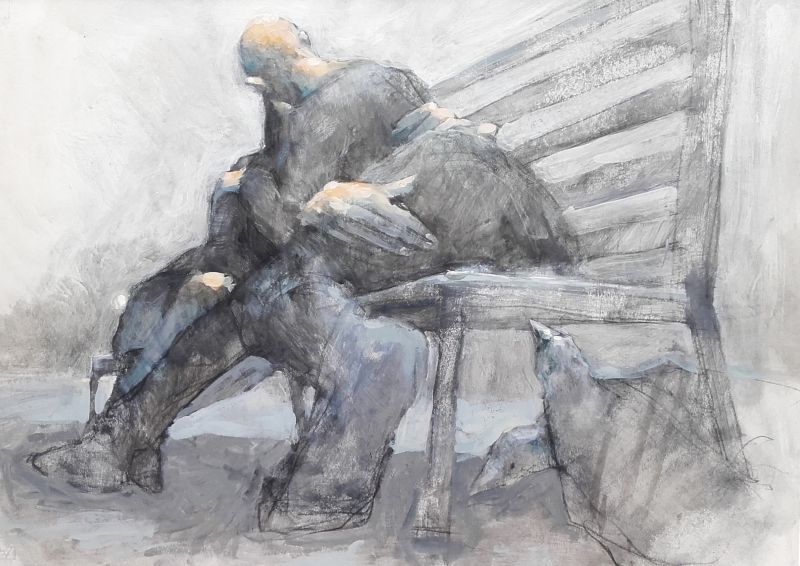


.jpg)





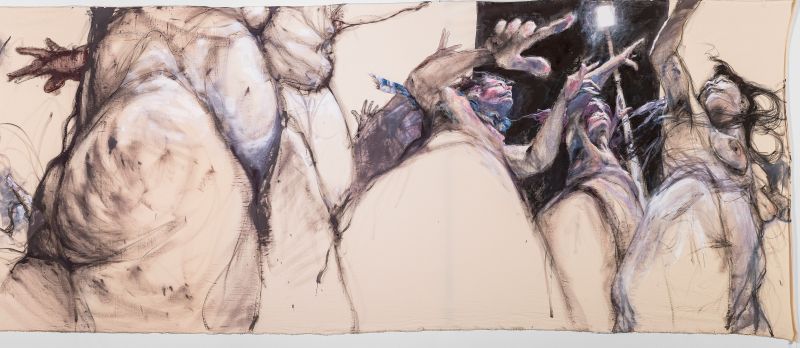











.jpg)




,%202022.jpg)




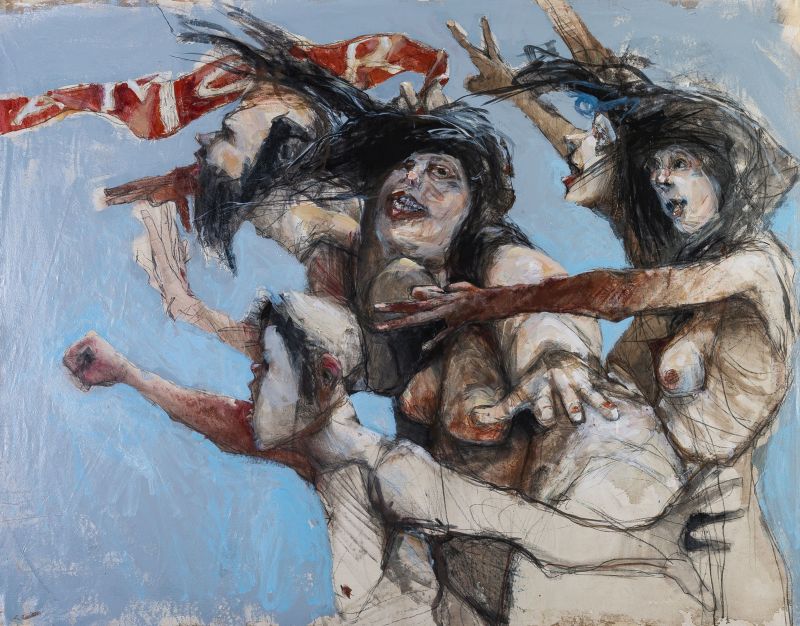





















.jpg)

